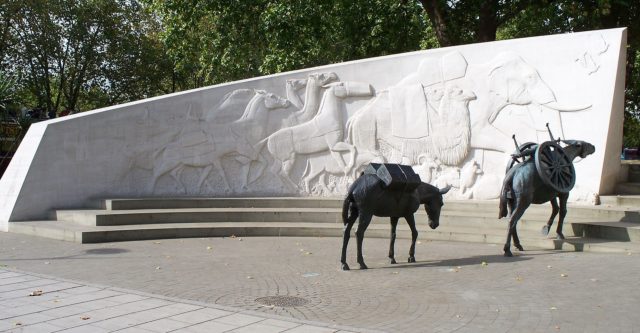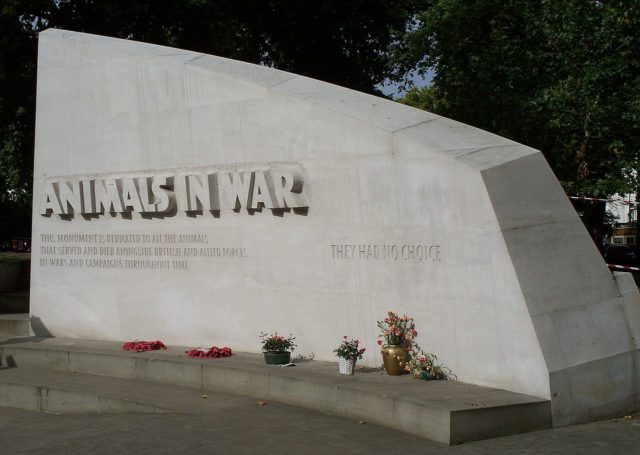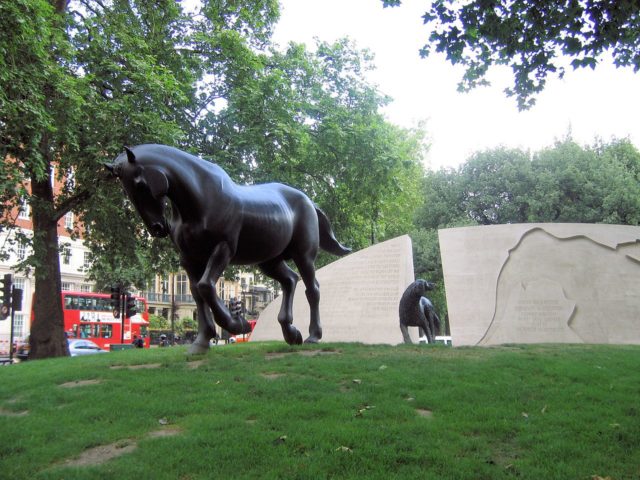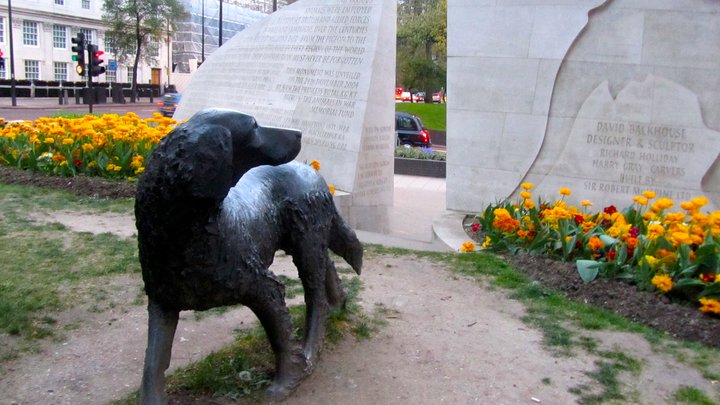There are two sentences carved on a large stone plate that constitutes the Animals in War Memorial, on Upper Brook Street just outside of Hyde Park, not far from the U.S. embassy in London.
“This monument is dedicated to all the animals that served and died alongside British and Allied forces in wars and campaigns throughout time” says the first, speaking of their fearless acts, valor, and uncompromising devotion to humanity when it was needed the most.
And right beneath, in only a few words, the second one reads: “They had no choice.”
While there are countless stories of animals and their sacrifice in days of war, there is one not much told and almost completely forgotten, about all of those who didn’t get the chance.

In 1939 the United Kingdom, after failing to settle its differences with Germany through diplomacy, knew a war was imminent. Hence, in order to best prepare the nation for the worst-case scenario, the government issued some much-needed precautionary measures, such as preparing shelters for civilians or encouraging food stockpiling to avoid starvation. After witnessing sirens being placed on almost every corner of the United Kingdom and getting an issue of Air Raid Precaution in every newspaper they bought, the people, fearing for theirs and the safety of their loved ones, naturally began to panic.

Many “what in case of this” questions were raised. People knew that they would struggle to find food, water, and space to sleep for their family in the shelters, let alone for their pets. Therefore many were obviously concerned what to do with them when the war started. As an answer, in mid-summer 1939, on the eve of World War II, the British government established the NARPAC as an extension of the ARP organization, issuing a formal statement that read: “If at all possible, send or take your household animals into the country in advance of an emergency,” continuing with, “If you cannot place them in the care of neighbors, it really is kindest to have them killed.”
In short, either take your pets out of the cities or euthanize them. And this preemptive advice given by the government was published in every newspaper and broadcast on every television station, assuming it was perhaps the kindest thing that could be done for animals that, home kept, were certainly were not prepared in any way to fend for themselves.

Countless families who felt themselves placed between a rock and a hard place did the unthinkable and followed the advice. However, instead of killing them, as the booklet “Advice to Animal Owners” instructed and explained how, giving specifics and all, they searched for veterinarians and hospitals that would be willing to help and put their beloved pets to “sleep.”
The summer passed with a lot of hearts left broken, unwilling to say goodbye, until the blackout was enforced in every home, an order to block any light from escaping that possibly indicate their whereabouts. Hospitals and factories in the vicinity that were considered as potential bombing targets, every home and every shop as ordered was covered with dark drapes, black cardboard, or even black paint if necessary.

After the morning of September 3, 1939, when King George VI addressed his nation on a live broadcast informing them that the United Kingdom had officially declared war against Germany and Nazism, for every mother comforting her scared child, there was a father carrying a pet on the streets.
Almost every street in London was suddenly filled with disoriented and scared people, among whom were many walking their pets for one last time. It was reported in the following days that almost every hospital and dispensary was overwhelmed by the sheer number of pets brought to them, and by the end of the week almost 750,000 of these poor animals were either put to sleep or killed by their owners.

This was by no means a heartless slaughter or cold-blooded killing. If nothing else, probably most of them were poor, lost, and utterly afraid people who had been told the war has come and had to decide between their children and their dog, fearing shelters were small and food scarce.
Read another story from us: In Ancient Egypt, cats were sacred – killing one was punishable by death
In a way this was one of the many obvious signals that war is not knocking, it has entered uninvited through the front door. As the esteemed historian and former Dean of Ruskin College, Hilda Kean, recalls, “It was one of the things people had to do when the news came–evacuate the children, put up the blackout curtains, kill the cat.”
